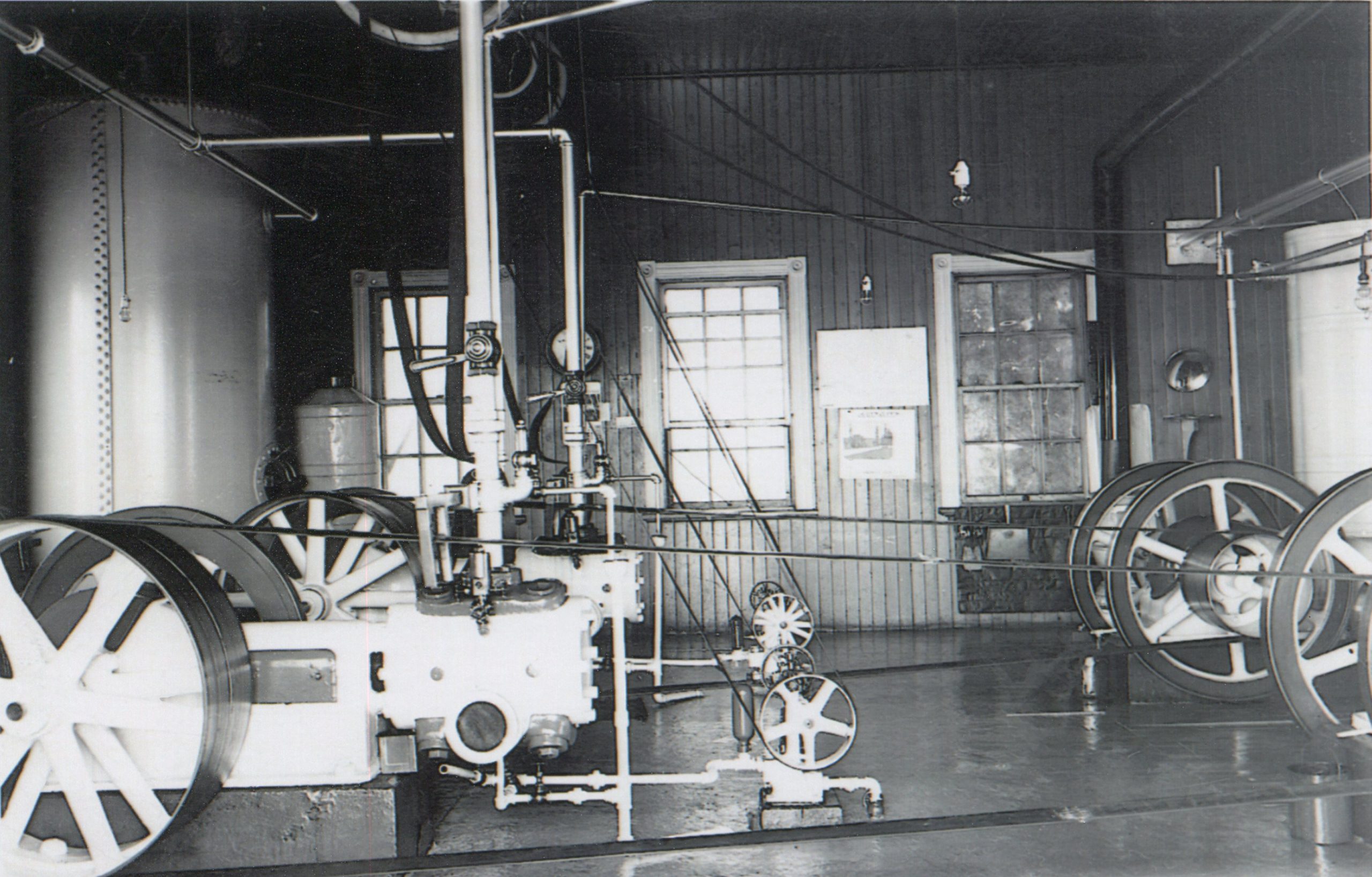Sounding the Alarm – The Foghorn and its Building

Photograph
Metis Lighthouse’s Engine Room, About 1960
Private Collection
The greatest danger to shipping on the Lower St. Lawrence was not the high seas, rocks and shoals, but the fog. The collision of cold water and warm air produces fog. Where freshwater rivers meet the St. Lawrence, the phenomenon is amplified. In Metis, fog brought poor visibility an average of 1,000 hours every year. This at least was the figure used to justify the installation of a foghorn in 1918.
The foghorn warned passing ships of the poor visibility and urged them to stay offshore. The horn and the gasoline engine required to power it necessitated the construction of a new building, constructed to the north of the lighthouse. The trumpet of the diaphone was pointed northward and located 28 feet above the high-water mark. A spare engine was on hand in case the main engine failed to start to the compressed-air essential to the fog horn’s operation.
Just as the light of every lighthouse was distinct, each foghorn on the St. Lawrence sounded a different note. The cry of the Metis foghorn descended at the end of its long note, allowing passing vessels to recognize where they were in spite of the fog. Its distinctive cry was last heard on April 1, 1971 when it was permanently silenced. The equipment was dismantled and removed.
The foghorn building was converted for use as a laboratory. It was used by researchers, first by the Canadian Forestry Service and latterly by marine biologists from Laval University. The lab makes up for its rudimentary equipment by its proximity to the pristine ecosystems of the lighthouse shoreline, facilitating the ongoing monitoring of the St. Lawrence and the health of its marine species.

